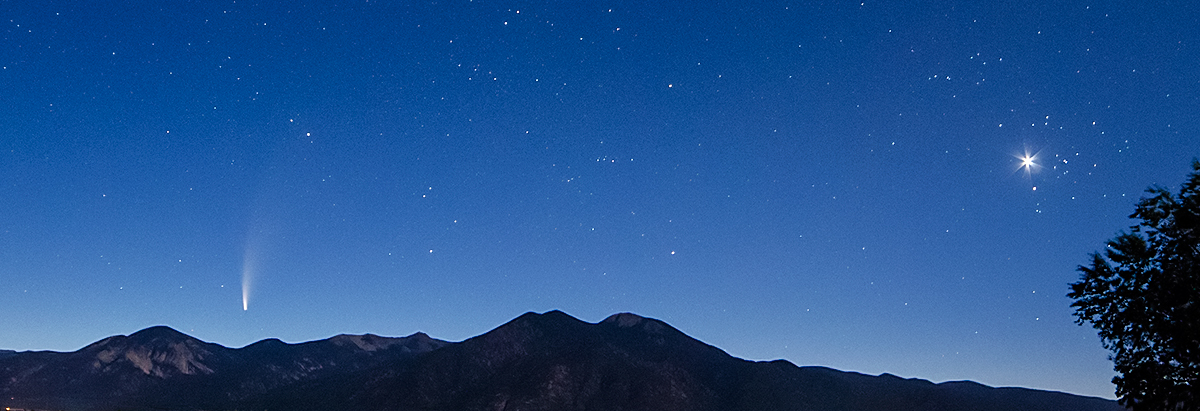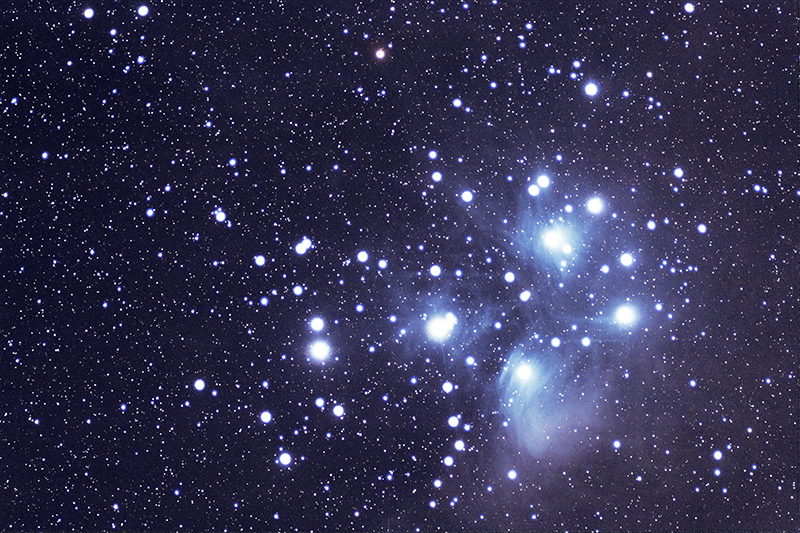
Welcome to taosastronomer.com!
offering
local "hands-on" observing
(visual and imaging) sessions and instruction
viewing and imaging from Rabbit Valley Observatory
a dark sky location on the mesa just west of Taos, NM
 |
Image obtained 3-15-2015 through RVO's Megrez 80mm refractor with Orion field-flattener lens, using a Baader-modified Canon XSi DSLR and BackyardEOS image-acquisition software -- 12 selected and stacked 300-second luminance frames combined with multiple dark, flat and bias calibration frames shot at ISO 1600 and totaling more than 160 minutes (60 minutes effective luminance) were used to create this image; optics driven by the Losmandy G-11 mount equipped with Ovision's precision RA worm gear, guided with an Orion SSG3 Monochrome CCD camera using Maxim DL Pro and post-processed with DeepSkyStacker and Photoshop CS3. [image copyright Rabbit Valley Observatory/Willis Greiner, 2015 -- all rights reserved] The Pleiades, or Seven Sisters, located in Taurus the Bull and designated M45, are a nearby young galactic cluster, the stars of which are embedded in nebulosity shining by light reflected from microscopic solid dust particles. These types of nebulae are called "reflection nebulae". They appear blue on photographs, because blue light is scattered more than other colors by small dust particles. Their spectra are exact copies of the spectra of the stars illuminating them. The complexity of the Pleiades nebulae, which was already hinted at by several mid-19th-century observers, was fully revealed by the first astro cameras, e.g. by that of the brothers Henry in Paris and Isaac Roberts in England, between 1885 and 1888. The largest piece of nebulosity, the so-called Merope Nebula, extends to the south of the star Merope (just to the right and below the center in the image above). The dust particles forming this remarkable nebulosity are part of an interstellar molecular cloud, which currently happens to be crossed by the Pleiades star cluster. This is not material of which the cluster was formed. The distance of the Pleiades cluster has been determined by direct parallax measures by ESA's astrometric satellite Hipparcos; according to these measurements, the Pleiades are at a distance of 380 light years (previously, a value of 408 light years had been assumed). However, even more recent parallax measurements using the Hubble Space Telescope have resulted in a larger distance of 440 light years. The age of the Pleiades star cluster amounts to about 100 million years. Modern observing methods have revealed that at least 500 mostly faint stars belong to the Pleiades star cluster, spread over a 2 degree (four times the diameter of the Moon) field. Their density is rather low, compared to other open clusters. |
(all content copyright 2015-2019 Willis Greiner Photography, all rights reserved)